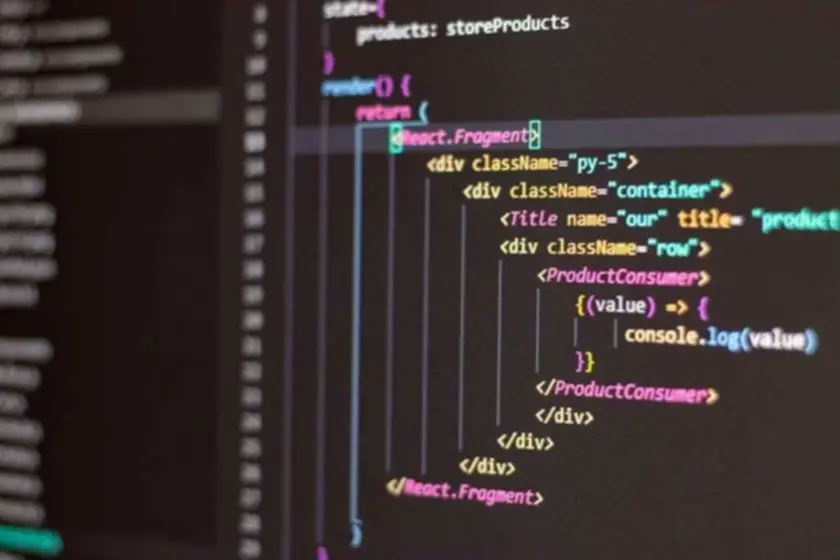Content
- Key Differences Between Private and Public Blockchains
- Comparative Analysis Between Public and Private Blockchains
- We’ve detected unusual activity from your computer network
- Blockchain Types for Supply Chain Use
- Cryptocurrency & Digital Assets
- Public VS Private Blockchain Examples
- Public vs. Private Blockchain Technology
Some exchanges in the United States have already started reporting suspicious activity reports (SAR) for any blockchain transactions of $10,000 or more. These exchanges, such as Coinbase, also require wallet owners to identify recipients of transactions of $3,000 or more in a single transaction. In a blockchain, transactions can trace back to the original wallet addresses. But that’s just public vs private blockchain numbers on a private key without any other identifying information tied to them. A standard bank account would have all the identifying information on an individual or company.
Key Differences Between Private and Public Blockchains
With this validation system, PoS can enable blockchain scalability by reducing energy consumption and increasing transaction speed since it doesn’t require the same level of computational power as PoW. A public blockchain is permissionless, that is, one that grants open access to everyone, irrespective of geographical location. Access control in a public blockchain is open source and brings to life the core tenets of decentralization. No single entity controls the blockchain platform, with every node, or participant sharing the responsibility to keep the network https://www.xcritical.com/ secure and functional. Data handling in a public blockchain is read and write access for everyone and the network offers full immutability, making it impossible to change the recorded data.
Comparative Analysis Between Public and Private Blockchains
We chose to build our own blockchain that is dedicated for decentralized digital identity use cases to better accommodate users. If our technology solutions were built using another blockchain, we would run the risk of being delayed by other applications running on the same blockchain. Verifiable Credentials are a type of digital document that allow individuals and organizations to prove their identity, claims, and qualifications in a secure and decentralized way.
We’ve detected unusual activity from your computer network
On these public blockchains, the nodes “mine” for cryptocurrency by creating blocks for the transactions requested on the network by solving cryptographic equations. In return for this hard work, the miner nodes earn a small amount of cryptocurrency. The miners essentially act as new era bank tellers that formulate a transaction and receive (or “mine”) a fee for their efforts. Public blockchains are extraordinarily valuable because they can serve as a backbone for nearly any democratized solution. When a company wants to have a network it can personally control and grant private access to; a private blockchain is the number one choice.
Blockchain Types for Supply Chain Use
- Because public blockchains have dominantly been used by cryptocurrencies to date, less people are aware of the growing number of use cases for public blockchains.
- While some are more straightforward and beginner-friendly than others, you shouldn’t encounter any difficulties with either of the top-rated exchanges.
- Since its introduction, blockchain has undergone several iterations as the general public and private corporations sought to take advantage of its valuable infrastructure.
- A private blockchain is a decentralized ledger that is only accessible to a select group of individuals or organizations.
- A public blockchain is one where anyone is free to join and participate in the core activities of the blockchain network.
- So, we’ve discussed the pros and cons of public vs private blockchains, their most favored features, and their drawbacks.
Obviously, this is totally opposite to what a public blockchain gives its users. But it allows a centralized organization to replicate its organizational structure on the blockchain, which is vital in cases where the organization will be held responsible for the validity of that information. For instance, a government land registry could benefit from the security and auditability of a blockchain, but it can’t relinquish its ultimate authority over the records. Public blockchains are accessible to anyone with a computer and an internet connection.
Cryptocurrency & Digital Assets
Each runs specialized software on their device, which connects with other devices running the software so that all participants are in possession of an up-to-date database. Privacy is something that was already addressed in the original Bitcoin whitepaper published by Satoshi Nakamoto back in 2008. He proposed that this security measure came through the anonymity of the two parties engaged in the transaction and that new “identities” be used for each transaction. While this starting point is still sufficient for a lot of use cases, nowadays we also have additional means of encryption and obfuscation at our disposal.
Public VS Private Blockchain Examples
Public blockchains have a larger network, which can get slow during increased activity. A public blockchain is open to anyone who wants to join, and there’s no need for permission. To join a network, you typically need to download and run a node software on your computer, which connects you to the network and allows you to participate in transactions and the consensus process. While there are general similarities between different implementations of blockchain technology, that doesn’t mean that there aren’t differences and, in some cases, improvements. Hence, the blockchain is literally a chain of blocks representing data about network activity. Ksenia is a Senior Content Marketer at OpenLedger, delivering all kinds of blockchain-related content to the company’s audience.
Regulations and Blockchain Technology
Public blockchains can also be used for digital identity verification and improve the privacy of customer data while still being transparent. This approach to ID verification reduces the risk of identity theft and fraud. For example, a patient’s health record can be issued as Verifiable Credentials and the DIDs of each patient are stored on a public blockchain while the health record is kept on their digital wallet app like the Dock Wallet. Access to the data can be enabled for qualified health practitioners to provide informed diagnoses, drug prescriptions, and other medical-related procedures. The use of private blockchains will not compromise the stored record, making it all the more ideal.
Once validated, the transaction is added to a block, forming a chain of blocks that constitute the immutable transaction history. This transparency and decentralization foster trust among participants, as no single entity has control over the network, ensuring the integrity and security of transactions. Proof of stake (PoS) is a newer system where users “stake” a certain amount of cryptocurrency to become validators on the network. Validators are chosen based on the amount of cryptocurrency they hold, and they use that cryptocurrency as collateral to verify and validate transactions. The more cryptocurrency a user stakes, the more likely they are to be chosen as a validator.
Here we will understand their fundamental differences and provide insights into which one may fit your business. In contrast to public blockchains, private blockchains operate within controlled environments, catering to specific organizations or consortia. These networks restrict access to authorized participants, akin to a private conference room where only invited members can engage in discussions. Unlike public blockchains where transactions are validated by a decentralized network of nodes, private blockchains rely on predetermined nodes or validators selected by the governing entity.
If someone suspects that the data may have been manipulated and wants to investigate, they can compare the information on the private blockchain with the public blockchain fingerprint. Also, because the network is decentralized, there is no single point of failure that can be exploited by bad actors. There are built-in incentives to encourage good behavior and discourage bad behavior in PoS blockchains where stakers are rewarded for holding and staking cryptocurrency. These incentives help to align the interests of network participants and encourage them to act in the best interests of the network. In contrast, PoS blockchains have much lower energy consumption and carbon footprint than PoW blockchains, making them a more environmentally friendly option. Because PoS blockchains do not require vast amounts of computing power to validate transactions, they consume far less energy.
Public and private blockchains face different challenges when it comes to handling a growing user base and transaction volume. These blockchains rely on a complex computer program called a consensus mechanism to validate transactions and maintain the integrity of the distributed ledger. Public blockchains are like giant online bulletin boards – every transaction is openly broadcasted and permanently recorded on a public ledger. Anyone with an internet connection can see these transactions happening in real time. Quorum, another notable private blockchain, was developed by JPMorgan Chase and offers both high performance and robust privacy features.
A public blockchain is a transparent, secure, and decentralized way of recording transactions on a digital ledger. It provides a powerful platform for creating decentralized applications and services that are accessible to anyone with an internet connection. Anyone can join the network, read the data, and participate in transaction validation.
The potential of private blockchain development extends far beyond these examples. As the technology matures and security protocols continue to be refined, we can expect private blockchain development to play an increasingly crucial role in industries that prioritize data security and controlled access. Finally, Corda is a private blockchain specifically designed for financial institutions. It focuses on interoperability and privacy and is used for trade finance, supply chain finance, and other financial applications.
While private blockchains offer enhanced privacy, they may be vulnerable to insider threats or collusion among authorized participants. Ensuring robust security measures and access controls is paramount to mitigate these risks. For example, a private blockchain used for voting or elections may be susceptible to manipulation or fraud by insiders with malicious intent. Additionally, the centralized nature of private blockchains may make them a target for cyber attacks or unauthorized access attempts.
Cryptocurrency theft occurs when supporting applications and programs on a blockchain network are hacked into and private keys are stolen. Permissioned blockchains also suffer this weakness because the networks and applications that connect to the blockchain services depend on security measures that can be bypassed. Thus, private blockchains control who is allowed to participate in the network. The owner or operator has the right to override, edit, or delete the necessary entries on the blockchain as required or as they see fit or make changes to the programming.





